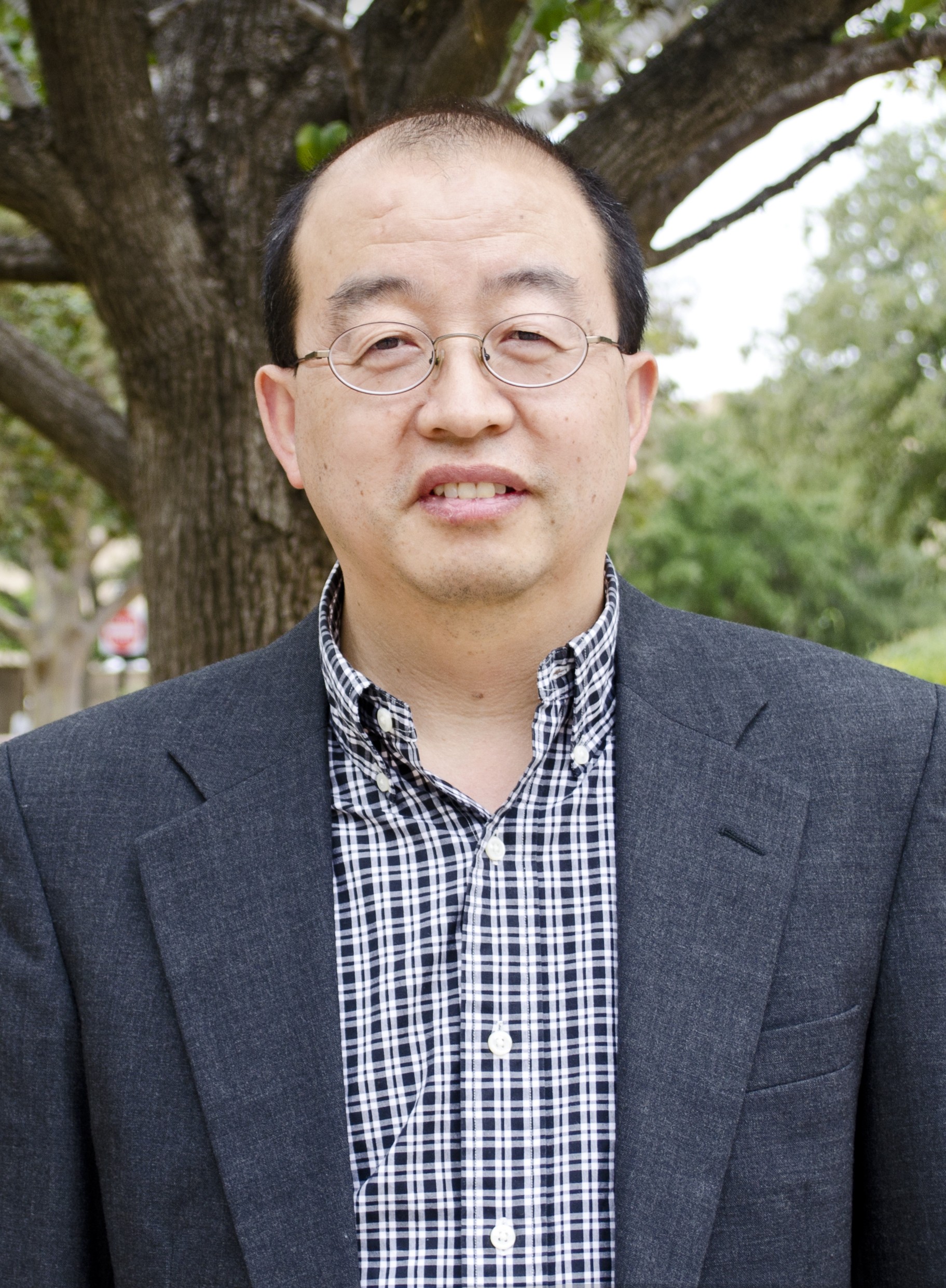
In 2012, Texas A&M University chemist Hongcai (Joe) Zhou’s research resulted in a novel carbon-capture technique — in essence, a flypaper-like “trap” — poised to significantly reduce the amount of carbon dioxide (CO2) emitted by power plants across the nation and world.
Three years later, Zhou’s latest proposal on carbon-capture research is one of 16 selected nationwide by the United States Department of Energy (DOE) National Energy Technology Laboratory (NETL) to advance new CO2 storage technologies.
The grants, announced earlier this month, are being awarded through the NETL’s Carbon Capture Program, which funds development and testing of transformational CO2 capture systems for new and existing coal-based power plants. Research funded by this program is expected to help overcome limitations of singular, standard gas treatment systems, such as those based on solvents, sorbents or membranes alone.
Zhou will receive nearly $1.5 million from the DOE along with $361,000 in non-DOE funding for a total of $1.8 million in support of his proposal, Evaluation of Amine-Incorporated Porous Polymer Networks as Sorbents for Post-Combustion CO2 Capture. In collaboration with Colorado-based Advanced Clean Energy Solutions, LLC, and College Station-headquartered framergy® Inc., Zhou will seek to develop highly porous materials with high CO2 affinity capable of capturing it from flue gases with low parasitic energy consumption.

Zhou, a professor in the Texas A&M Department of Chemistry since 2008 and holder of the Robert A. Welch Chair in Chemistry, is a world leader in the design of framework materials — precisely arranged and highly porous polymer-based structures that hold promise in a variety of energy and environment-related areas and applications. These framework materials include metal-organic frameworks (MOFs) and porous polymer networks (PPNs). Zhou’s group currently holds the wold record in surface area for a porous organic polymer.
In this case, the team will rely on Zhou’s proven expertise in PPNs and focus on fine-turning them by incorporating amine groups in order to increase their capacity for carbon capture. Zhou, who has served since 2011 as the co-founder and scientific advisor for framergy®, says they plan to design and synthesize new amine-functionalized PPNs and also conduct lab-scale testing of these materials using both simulated and actual coal-derived flue gases for the 36-month duration of the grant.
Thus far in his relatively young career, Zhou has earned nine DOE grants individually in excess of $1 million, including one this past spring for MOF-based hydrogen-storage materials and two in the past five years under the Advanced Research Projects Agency-Energy (ARPA-E) program. During the past three years alone, he has more than $8 million in external research funding from DOE, the U.S. Department of Defense and the Robert A. Welch Foundation.
“This carbon-capture grant awarded to Joe attests to the close relationship existing between his fundamental research program and some of the most important global problems,” said Dr. François P. Gabbaï, professor and head of the Department of Chemistry and holder of the Arthur E. Martell Endowed Chair. “It also positions him as a leader in the green endeavor of environmental remediation.”
Zhou, who also holds an appointment in the Department of Materials Science and Engineering and is a member of the Texas A&M Energy Institute, has received many awards recognizing his pioneering research, including the Research Innovation Award and the Cottrell Scholar Award from the Research Corporation for Science Advancement, a National Science Foundation CAREER Award, the Miami University Distinguished Scholar-Young Investigator Award and the 2007 Faculty Excellence Award from Air Products and Chemicals Inc.
